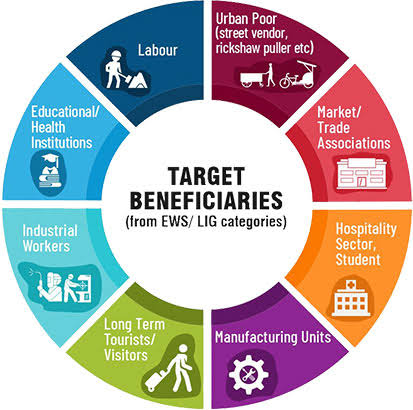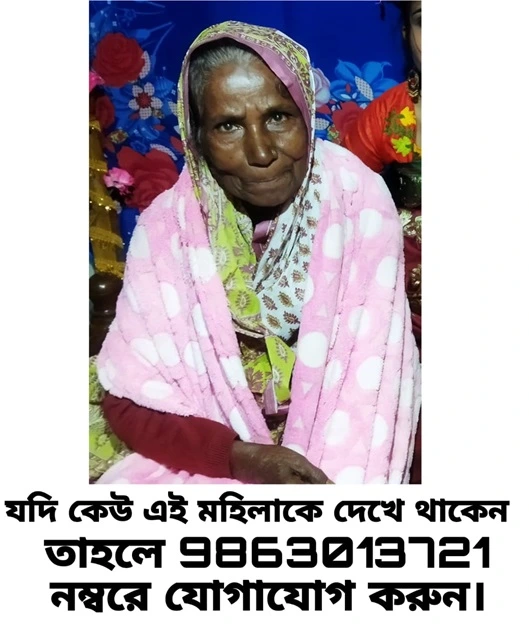
The document titled “Deendayal Antyodaya Yojana – National Urban Livelihoods Mission (DJAY)” outlines a comprehensive Government of India initiative (under the Ministry of Housing and Urban Affairs – MoHUA) aimed at eradicating urban poverty and improving the lives of urban poor, particularly those engaged in vulnerable and informal occupations.
Table of Contents
Summary of Key Aspects of the Mission
1. DJAY Mission Objectives
- Alleviation of urban poverty through sustainable livelihoods and improved access to welfare.
- Special focus on individuals involved in 6 vulnerable occupations:
- Construction Workers
- Transport Workers
- Gig Workers
- Domestic Workers
- Waste Workers
- Care Workers
These groups face multiple layers of occupational, social, and residential vulnerabilities such as:
- Job insecurity, low wages
- Hazardous working conditions
- Inadequate housing, social stigma
- Exclusion from welfare schemes and social protection
2. DJAY Mission Strategy
- Whole-of-Government approach with coordination at National, State, District, and ULB levels.
- Test-Learn-Scale model to refine through pilot implementation in 25 cities.
- Promotion of inclusive development with emphasis on women, elderly, disabled, migrants, and marginalised communities.
- Pilot implementation → full scale-up.
3. DJAY Key Components
3.1 Community Led Institution Development (CLID)
- Formation of Self-Help Groups (SHGs) & Common Interest Groups (CIGs)
- Federate into Area-Level Federations (ALFs) and City-Level Federations (CLFs)
- Financial support: Revolving Fund, Community Investment Support Fund (CISF)
3.2 Financial Inclusion & Enterprise Development (FI&ED)
- Credit up to ₹4 lakh (individuals) and ₹20 lakh (groups)
- Interest subvention (4% for women)
- Entrepreneurship Development Program (EDP)
- Support for micro-enterprises linked to local demand
- Market linkages and exhibitions (SHG Melas)
3.3 Social Infrastructure
- Shelters for Urban Homeless with basic amenities
- City Livelihood Centres (CLCs) for skilling, marketing, and employment access
- Labour Chowks for safe hiring of construction workers
- Care Infrastructure clusters (daycares, elderly support) to empower women and care workers
3.4 Convergence
- Socio-economic profiling to identify urban poor and ensure welfare linkage
- Creation of a centralised database integrating datasets like e-Shram, BoCW, SBM
- SUYOG Centres at ULB-level to provide single-window access to welfare benefits
3.5 Innovative & Special Projects (I&SP)
- New pilots like NIPUN (skilling construction workers), entrepreneurship challenges
- Dedicated interventions in Aspirational Districts
- C-LAPs (City Livelihood Action Plans) to map and stimulate city-specific livelihood ecosystems
4. Capacity Building & Training (CB&T)
- Staffing across all levels (National to ULBs)
- Funding for hiring Mission Managers and experts
- Community-to-community exposure, skill training for beneficiaries and staff
- Engaging National Resource Organisations (NROs)
5. Branding, Communication & Technology
- Comprehensive IEC campaign for awareness
- Strong MIS and IT platforms for progress tracking
- Integration with portals like Udyami Mitra
6. Funding Pattern
- Cost sharing: Centre:States = 60:40
(90:10 for NE and Hill states; 100% Central for UTs) - Quarterly progress reports, UC requirements, and PFMS compliance mandatory
7. Mission Structure & Governance
- Four-tier structure:
- National: National Advisory & Review Committee (NARC)
- State: High-Powered Committee (HPC)
- District: District Level Committee and Mission Management Unit
- ULB: Executive Committee + City Mission Management Unit
- Emphasis on cross-departmental convergence and accountability
8. Monitoring & Evaluation
- Real-time MIS for data capture and reporting
- Monthly updates by States and ULBs
- Social audits and community-led monitoring encouraged
- Third-party evaluations for transparency and course correction
Duration & Outcomes
- 5-year Mission period
- Key outcomes:
- Empowered community institutions (SHGs/CIGs)
- Access to affordable credit
- Improved livelihoods and entrepreneurial ecosystem
- Social security and inclusion of the urban poor
- Targeted support to poorest households in informal sectors
Beneficiary Identification
- Base: NFSA, e-Shram, BoCW, other verified local databases
- Special focus on migrants, AAY households, and unregistered vulnerable workers
Final Note:
DJAY is a rights-based, inclusive mission focused on transforming the lives of the informal urban workforce. It integrates financial, social, institutional, and capacity-building interventions — all with a strong convergence approach between multiple ministries and stakeholders.
Let me know if you’d like a shorter version, a presentation-style brief, or help focusing on a specific occupational group or section.
For More : https://skylinktimes.in




d jay is great opportunity of Melaghar MC & Sonamura Sub Divison women